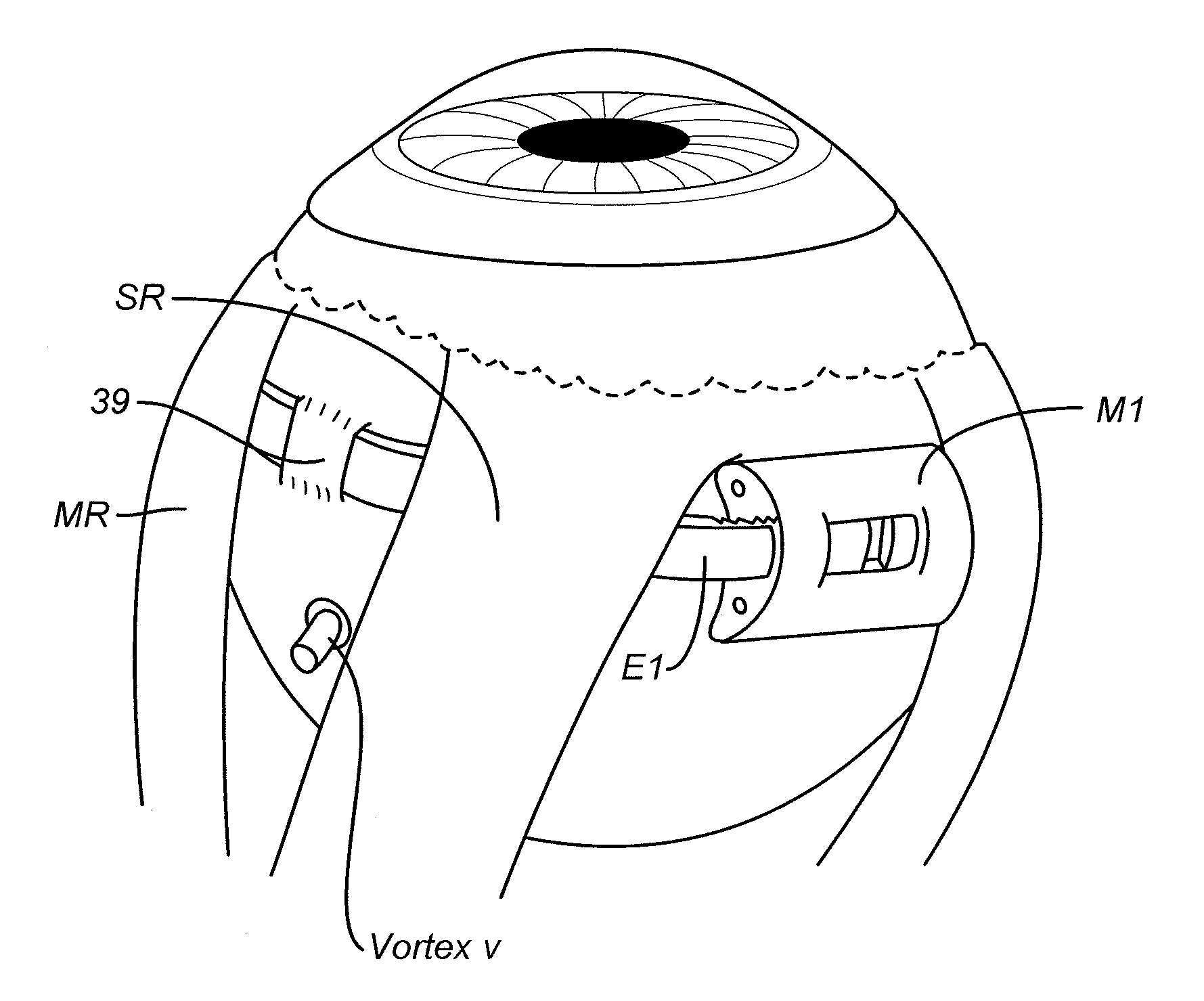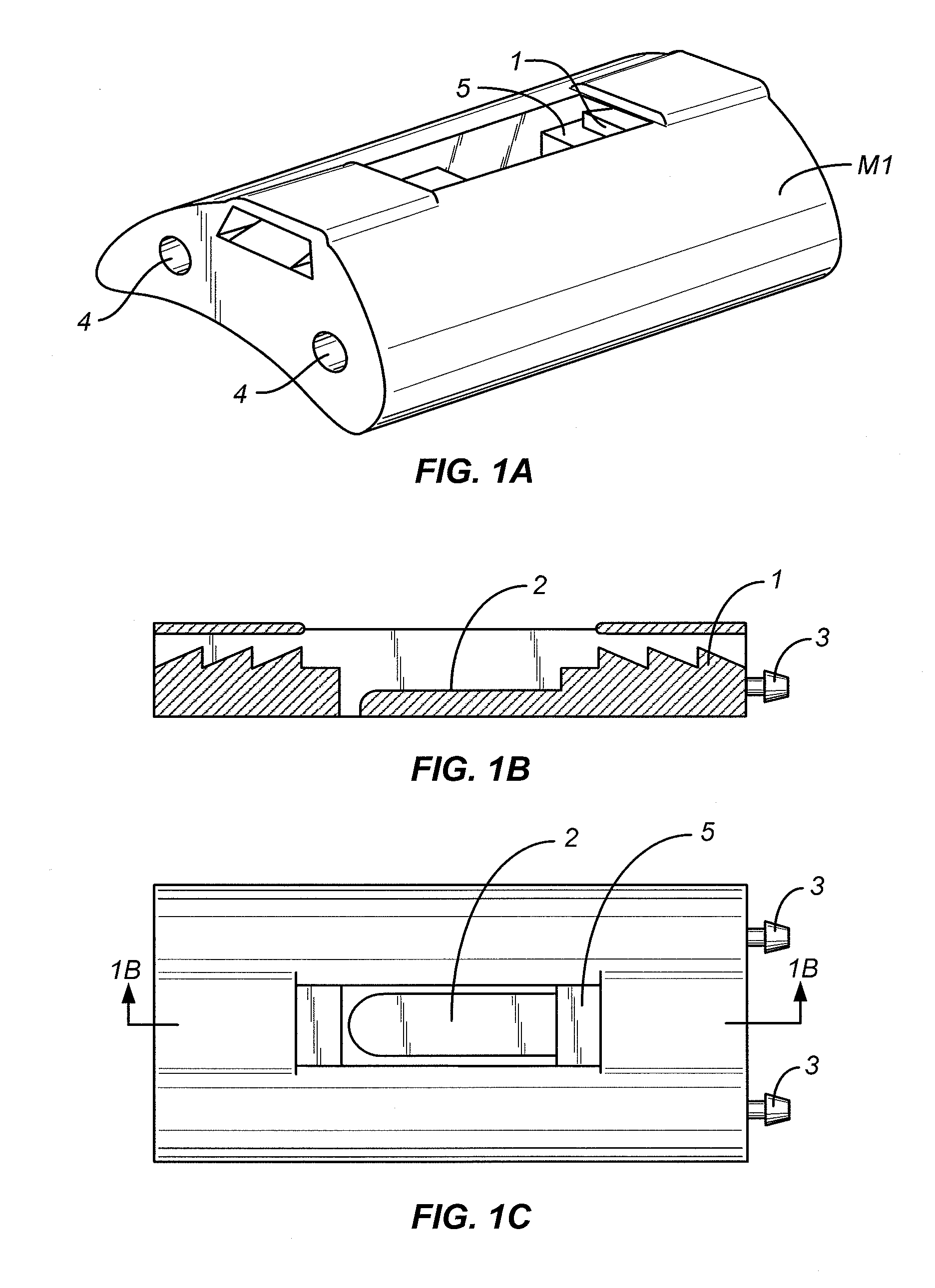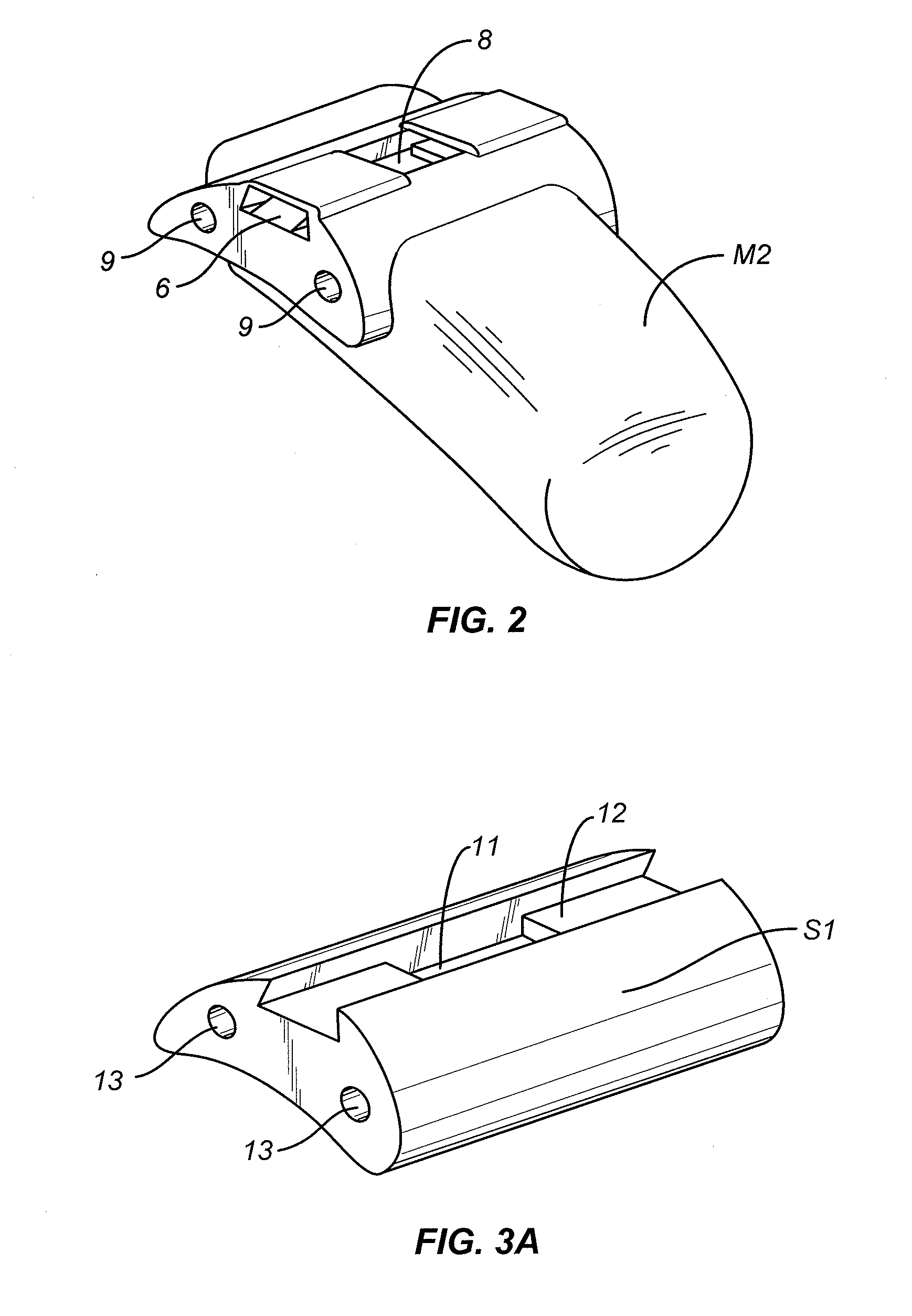Scleral buckles for sutureless retinal detachment surgery
a retinal detachment and buckle technology, applied in the field of eye surgery, can solve the problems of surgical failure and permanent damage, high surgical procedure with potential major complications, and accidental perforation of the sclera,
- Summary
- Abstract
- Description
- Claims
- Application Information
AI Technical Summary
Benefits of technology
Problems solved by technology
Method used
Image
Examples
embodiment i
[0046]Main Scleral Buckle
[0047]FIG. 12 depicts a perspective view of a main circumferential scleral buckle in a first embodiment of the invention in use, and FIG. 13 depicts an additional perspective view of a main radial scleral buckle in the first embodiment in use. In the first embodiment, there are two types of scleral buckles: the main scleral buckle and the optional supplementary scleral buckle. All use an encircling band E1. All are made with medical grade silicone rubber. Other embodiments of the scleral buckles are mounted in a similar fashion and are therefore not shown as mounted.
[0048]The structure features a main or major scleral buckle and an optional supplementary scleral buckle and an encircling band. The main scleral buckle has two configurations, circumferential M1 (FIGS. 1A-1C and FIGS. 12) and radial M2 (FIG. 2 and FIG. 13). The main scleral buckle M1 or M2 directly locks and tightens the two ends of the encircling band E1 (FIGS. 12, 13) with locks 1, 6 and forms...
embodiment ii
[0064]In a second embodiment, there is only one type of scleral buckle (with 2 configurations: radial (FIG. 6A-6C) and circumferential (FIG. 7) to assemble with an encircling band E2. The basic principle, material and rationale for choice of configuration of scleral buckle are the same as that of embodiment I. The difference between embodiment I & II lies in the method of locking between the scleral buckle and encircling band. In this embodiment, both ends of the encircling band are locked together directly by a silicone sleeve (not shown) after the encircling band E2 has passed through the four scleral tunnels. The scleral buckle does not function as the main lock to hold and tighten the two ends of the encircling band. The buckle is assembled with the encircling band to exert indentation effect onto the eyeball. (FIG. 8).
[0065]The Scleral Buckle
[0066]The scleral buckle of a second embodiment has two configurations: circumferential II1 (FIG. 6A-6C) and radial II2 (FIG. 7). The scle...
embodiment iii
[0071]Embodiment III is similar to embodiment II where there is only one type of scleral buckle (with 2 configurations: circumferential (FIG. 9) and radial (FIG. 10) to assemble with an encircling band E3. The basic principles, materials and rationale for choice of configuration of the scleral buckle are the same as that of embodiments I and II. The difference between embodiment II and embodiment III lies in the method of locking between the scleral buckle and the encircling band. In this embodiment, like embodiment II, a sleeve is used to lock and tighten the two ends of the encircling band together after it has passed through the four scleral tunnels 39. The buckles III1, III2 are assembled with the encircling band E3 to exert an indentation effect onto the eyeball by a different mechanism from embodiment II.
[0072]The Scleral Buckle
[0073]The scleral buckle has two configurations: circumferential III1 and radial III2. The scleral buckles III1, 1112 are assembled with the encircling...
PUM
 Login to View More
Login to View More Abstract
Description
Claims
Application Information
 Login to View More
Login to View More - R&D
- Intellectual Property
- Life Sciences
- Materials
- Tech Scout
- Unparalleled Data Quality
- Higher Quality Content
- 60% Fewer Hallucinations
Browse by: Latest US Patents, China's latest patents, Technical Efficacy Thesaurus, Application Domain, Technology Topic, Popular Technical Reports.
© 2025 PatSnap. All rights reserved.Legal|Privacy policy|Modern Slavery Act Transparency Statement|Sitemap|About US| Contact US: help@patsnap.com



